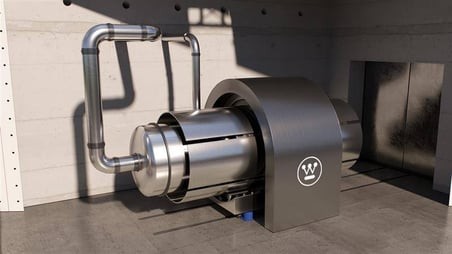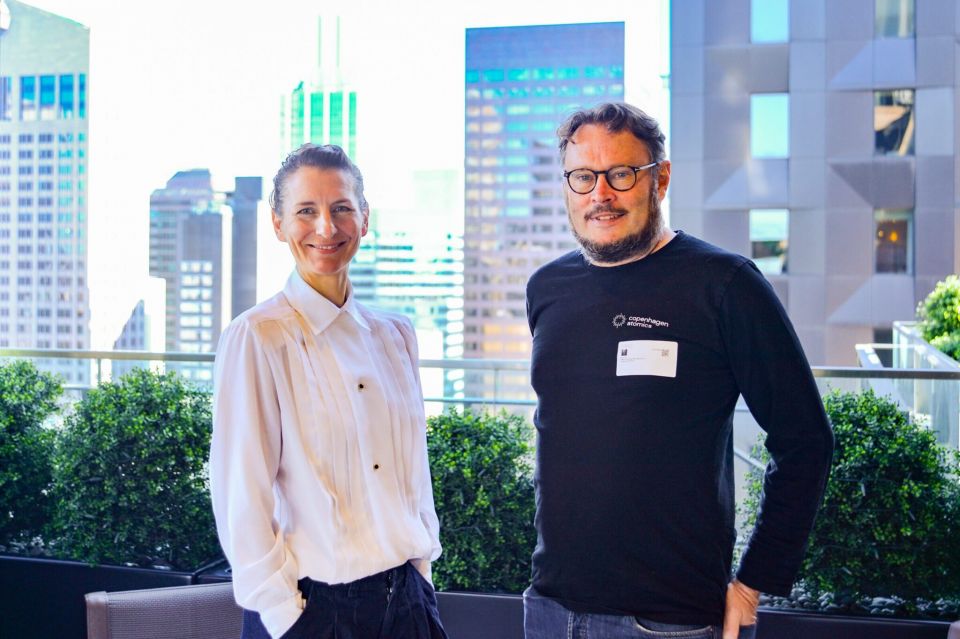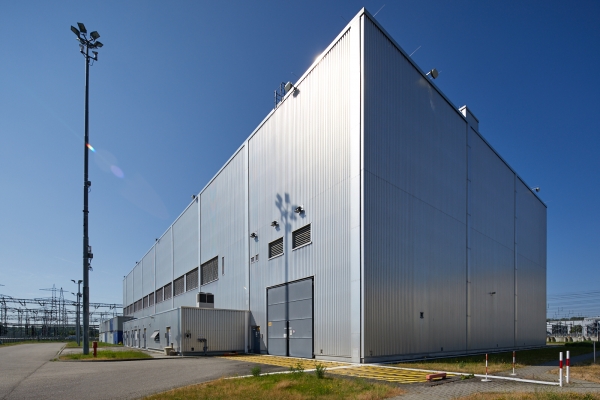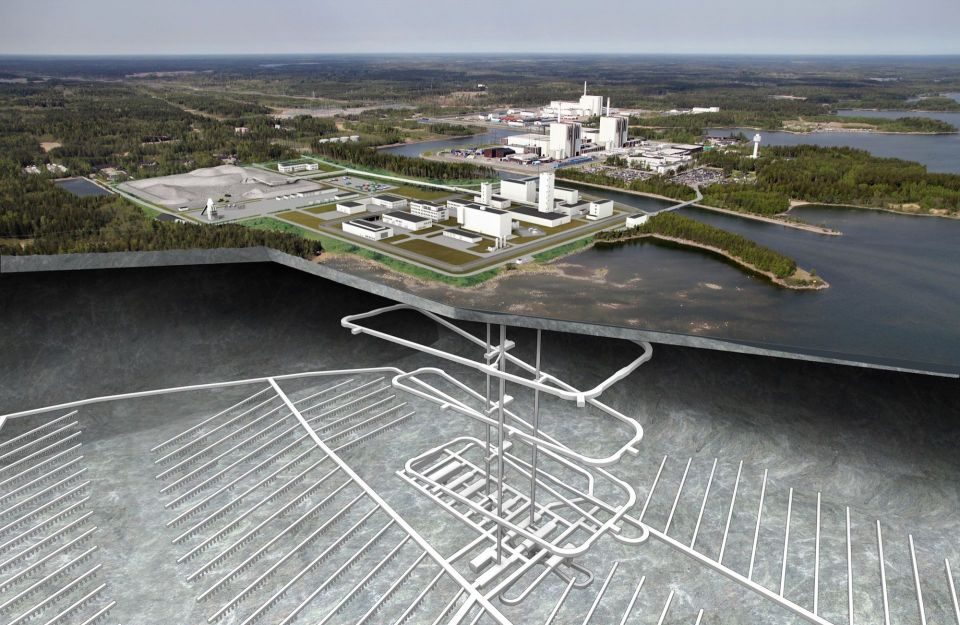Advancing Nuclear: Paths to the Future
"How do we move nuclear energy into the future?" was the question asked and answered in a variety of ways during a fascinating speakers' session that followed this morning's opening plenary. Several expert speakers in a variety of fields provided frank and illuminating commentary on the condition of nuclear now, and on the things that have to change for nuclear energy to be vibrant in the decades to come.
General Meeting Chair Raymond Juzaitis, in remarks prior to introducing the first speaker, noted that the build rate of nuclear plants worldwide is too slow, even considering the massive programs going on in Asia, to fully meet the perceived needs as outlined by the recent COP21 environmental conference. He noted that it is vital that nuclear energy be considered as "one tile in the mosaic of clean energies," and remarked that "one size will not fit all." He observed that small and large plant sizes as well as adaptable (read: flexible, or load following) operation are vital for nuclear to remain in the forefront of clean energy technologies. He stressed placing a premium generally on innovations in nuclear technologies - and further said that the premium should be focused on US universities, labs and companies so that the US remains in the lead in nuclear development. "Without technological leadership, we cannot have policy leadership," he said.
The first speaker of the morning panel was John Kotek, Acting Assistant Secretary of the Office of Nuclear Energy, US Department of Energy. Kotek stressed the overall need to have "efficient, reliable and competitive nuclear energy" as a part of the future mix and noted the growing recognition (especially in policy circles) that nuclear has a major role to play in meeting climate targets. Kotek, who attended the COP21 climate summit, noted the strong position that nuclear played there, observing that there was one single pronuclear side event staged there (by the United States.) Kotek, noting the role that the American Nuclear Society played in advancing the cause of nuclear generated electricity there, specifically also credited Secretary of Energy Moniz for holding a spotlight on nuclear as part of the "all of the above" US policy approach extended to the world at that important summit.
In describing the Office of Nuclear Energy's role in advancing nuclear energy into the next several decades Kotek said that "the DOE is still trying to see just what the best investments are to meet the deadline set by COP21 standards," adding that this was (of course) not just limited to nuclear energy. He said that there needs to be justification as to why there should be increased spending to develop nuclear technologies, and that decisions as to what areas should be invested in are being made now. He did credit the present administration for moving away from a 'renewable energy' sort of targeting over to a 'clean energy' language that at least partly admits nuclear energy to the game.
Hope is to be found, Kotek said, in the strong notion of Secretary Moniz to "decarbonize the electric sector," an effort in which Kotek feels there must be a part for nuclear energy. To that end his department is working to increase the amount of attention paid to nuclear energy, to "achieve a sustained acceptance of nuclear energy." Beyond that however are some solid goals set out, according to Kotek, by Secretary Moniz at a recent CSIS presentation. The eight goals are as follows:
1. Preserve the existing nuclear fleet, through technical changes meant to help economics and through market reforms meant to level the playing field.
2. Enable new nuclear builds primarily by finding ways to keep cost and schedule on target and eventually improve both.
3. Ensure license renewals for today's existing viable plants occur when needed.
4. Develop a robust, resilient electric grid that values inherently the assets that nuclear energy brings to the table.
5. Move forward on spent fuel management, including starting to move fuel from decommissioned reactor sites to interim storage facilities.
6. Ensure enhanced security measures and nonproliferation procedures are in place prior to a rapid expansion of nuclear energy.
7. Enable and support the rapid development and deployment of Small Modular Reactors.
8. Create a path to move to licensing and construction of true advanced reactors (Gen-IV).
Kotek believes, he said, that DOE's role is to "enable multiple pathways for the use of nuclear power." He wants there to be an increased awareness of the risks that occur when operable plants are shut down, and is directing an increasing emphasis at DOE toward helping existing plants with economics.
In terms of the back end of the fuel cycle, Kotek believes that a consent based siting program for long term disposition of used nuclear fuel is the key component, and to this end he said that DOE is still in the process of receiving input on what such a consent process might look like. "We need to achieve partnerships with willing and informed host communities and states," he said. Kotek observed that much of this process depends on the Congressional budget request; the plan to begin moving used fuel from long-shut-down nuclear plant sites was approved by the Senate, but not by the House - and the upcoming election could change this landscape again.
Regardless of any holdups in the waste or even the licensing processes, Kotek remains optimistic about the future. "There is a greater interest in nuclear innovation now than I've seen in decades," he said, adding that we generally as an industry "need to move to technologies that people widely approve of, and that end users will want to buy."
The discussion changed when Monica Regalbuto, Assistant Secretary of Environmental Management for DOE, stepped up next to talk about environmental remediation of the many major nuclear research and materials production sites left over from the early days of nuclear reactor development and nuclear weapons production.
Regalbuto informed the meeting attendees that while major progress has been made since the DOE Office of Environmental Management was formed in 1989, there is much work left to do. There originally had been some 107 sites under DOE stewardship which required remediation. This number is presently down to 16 sites, but according to Regalbuto "these remaining sites are the most challenging ones we have left." She remarked that the goal of the cleanup programs is to return the sites as much as possible to their hosting communities for general use and observed that this has occurred in a number of cases completed so far. She also added that where major cleanup is being done at still-operating sites it's important for the labs located there as well in order to keep the facilities viable as operating entities.
Showing a number of slides, Regalbuto commented on the vast efforts that have been undertaken and completed in the remediation program of the DOE. As one example, in Idaho DOE has demolished over 200 facilities large and small, with the transfer of more than 3000 used nuclear fuel units to dry storage and the treatment of over 600 million gallons from the Snake River Aquifer. Even more work has been done at Hanford. At Oak Ridge, in the K-27 demolition project, she said that over 4.5 million square feet of buildings (consisting of five process buildings) have been demolished, with over 53,000 truckloads of waste shipped off site and 720 acres transferred back to general use. In the same operations over 137 miles of contaminated piping was also removed.
In the realm of construction to support site remediation, she described the construction of a new Solid Waste Processing Facility at the Savannah River site, which required 27 miles of piping, 91,000 tons of concrete, and 5000 tons of steel rebar. The facility will process 9.4 million gallons of waste per year and greatly speed the site's underground tank cleanup.
Regalbuto observed that the recovery of WIPP is moving along steadily. WIPP, or the Waste Isolation Pilot Plant, was shut down following a 2014 incident in which a barrel of stored waste ruptured. The investigation into exactly what the failure mechanism behind this event was took over a year, according to Regalbuto. In 2015, as shown in Regalbuto's slides, radiological risk mitigation and initial closure of the immediately affected areas inside WIPP were accomplished, along with the re-establishment of a Safety Management Program. Regalbuto commented that WIPP may return to operation in December of this year.
Finally, Regalbuto observed that there is much room for innovation in the field of remediating former nuclear sites and opening them for other uses. "If we keep doing things the way we are now, it will cost billions and billions of dollars," she said, indicating the cost to complete remediation of the remaining DOE legacy sites. This is the purpose behind her office's Technology Development Program intended to improve and to reinvigorate technological development in areas relative to remediation of DOE legacy site waste. It was very telling that each of her slides had as a footer the following mottos: "Safety - Performance - Cleanup - Closure."
Mark Peters, Director of the Idaho National Laboratory, was up next to talk about the role that the national laboratories play in advancing the position of nuclear energy in today's broad "clean energy" marketplace. Peters opened by noting that "if nuclear energy is not cost competitive, then it's hard to think of nuclear being a future part of the clean energy mix." He added that "we must also find ways to sustain the existing fleet," because "if that goes away there won't be advanced nuclear." According to Peters, we need to develop the light water SMR's or Small Modular Reactors very soon, followed hopefully by the advanced or Gen-IV reactors in the 2030's.
Peters noted that ideally "technology informs policy," and remarked that it is imperative to drive this message even further than it has been driven already. Peters believes, he said, that the national laboratories are a key part of the path forward to these new technologies and that they must act as enablers for universities and for private companies to develop, in partnership, these new technologies.
In fact, Peters said that he personally "would like to double the contribution of nuclear electric generation by the year 2050" and added that we would have to both sustain all of the existing fleet and rapidly add new nuclear generation in order for this to occur. To do this, he believes that a new public-private partnership model must be developed to rapidly accelerate development, licensing and construction of advanced types of reactors (both light water SMR's and other, Gen-IV types.)
In discussing future uses of nuclear energy Peters told the crowd that while nuclear generated (and thus clean) electricity is a fairly "easy sell," the prospect of nuclear generated process heat for industrial use is a considerably harder case. He believes that the promotion of this use for nuclear generated process heat must be a "part of the business case" for Gen-IV reactors in order that they achieve their maximum potential.
Peters went on to say that it's very important to begin discussing, now, the full fuel cycle as it might exist for Gen-IV reactors that can both burn older used nuclear fuel and breed new fuel. Peters believes that while there is no public or political momentum presently, it is possible that in the not too distant future the recycling and reprocessing of used nuclear fuel may become an important part of the overall nuclear fuel cycle - and that the discussions about how and where to do this should start as early as possible. Peters believes that a permanent plan for used LWR (light water reactor) fuel is required first; then, it would be more credible to move into researching "safe and secure" nuclear fuel reprocessing technologies. He added the footnote that in some of the advanced designs it may be desirable to move fuel enrichment above the generally used 3 to 5 per cent seen today - and that production of higher-enrichment fuel would need to have its own, separate discussions as well.
Peters closed by reminding the ANS members assembled in Las Vegas that he believes that the national laboratories need to "step up" and provide new and innovative ways for private industry and universities to partner to use the labs' extensive physical and human resources to rapidly advance nuclear technologies. "We need to change the way we innovate," he reiterated, calling on the labs to be much "more flexible and agile" in what they provide users.
Other speakers appeared at today's session, but the above gives a flavor of what was said. To move to the future we must simultaneously develop new, economical and advanced reactors; we must make a plan ahead of time to deal with waste / used fuel (to avoid the kinds of things that the DOE is cleaning up at legacy sites) and we must work hard to change the opportunities to innovate new technologies whether for nuclear reactors or for cleanup of older sites. Truly, today's opening panel was about the future -- and how to get there at a pace not seen in decades in the United States. If today's speakers are to be believed, a solid path to that future is being constructed, in large part by people who are members of the American Nuclear Society.







